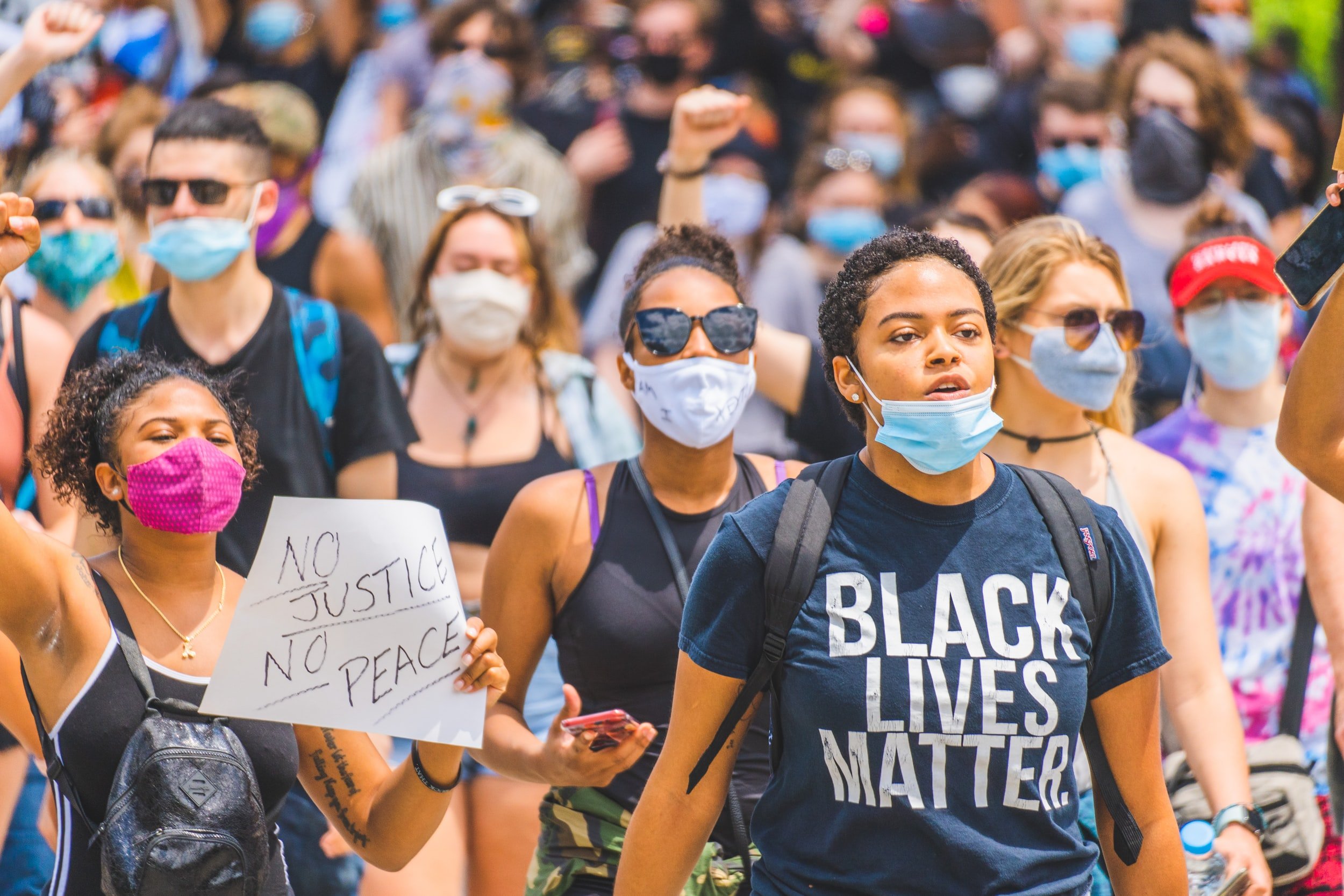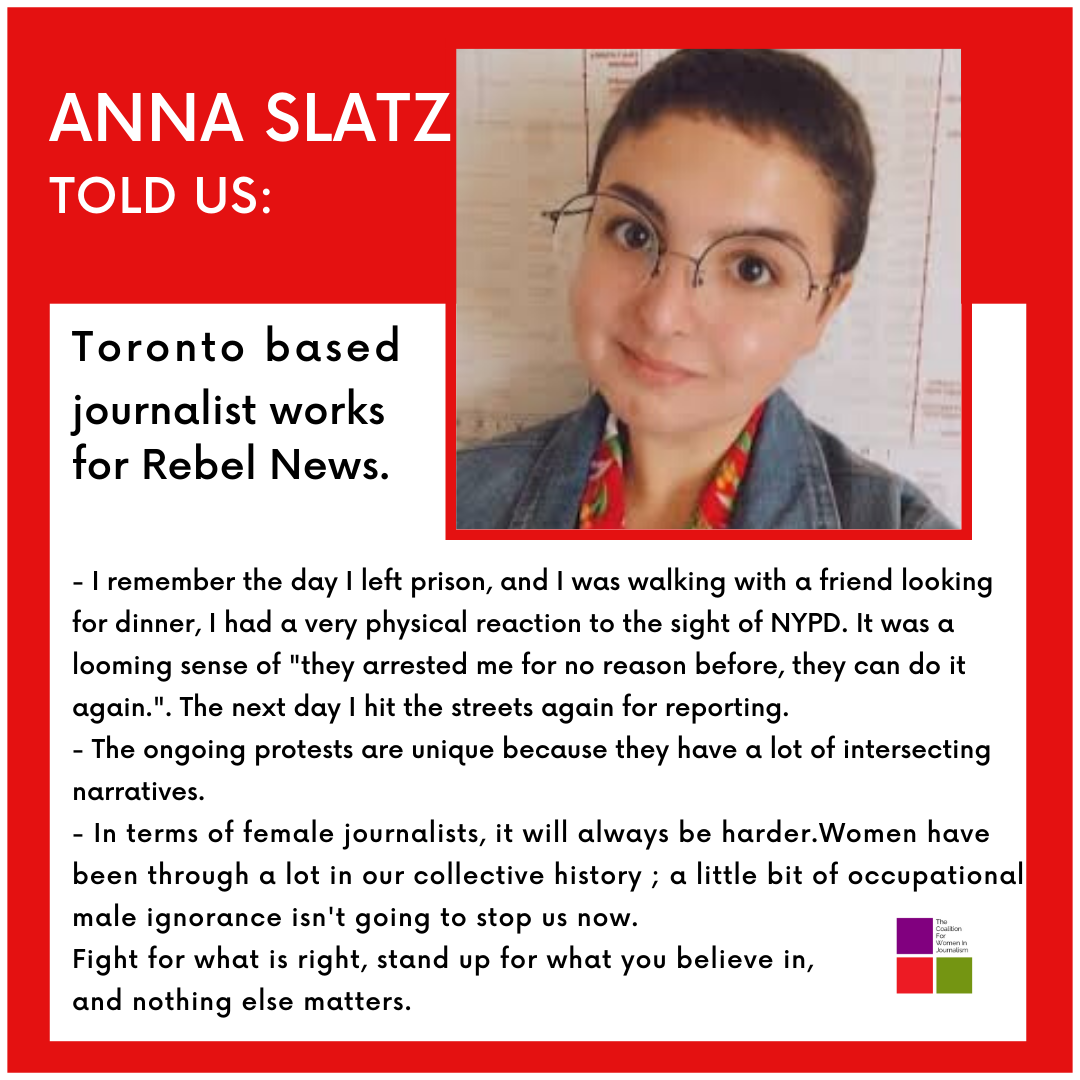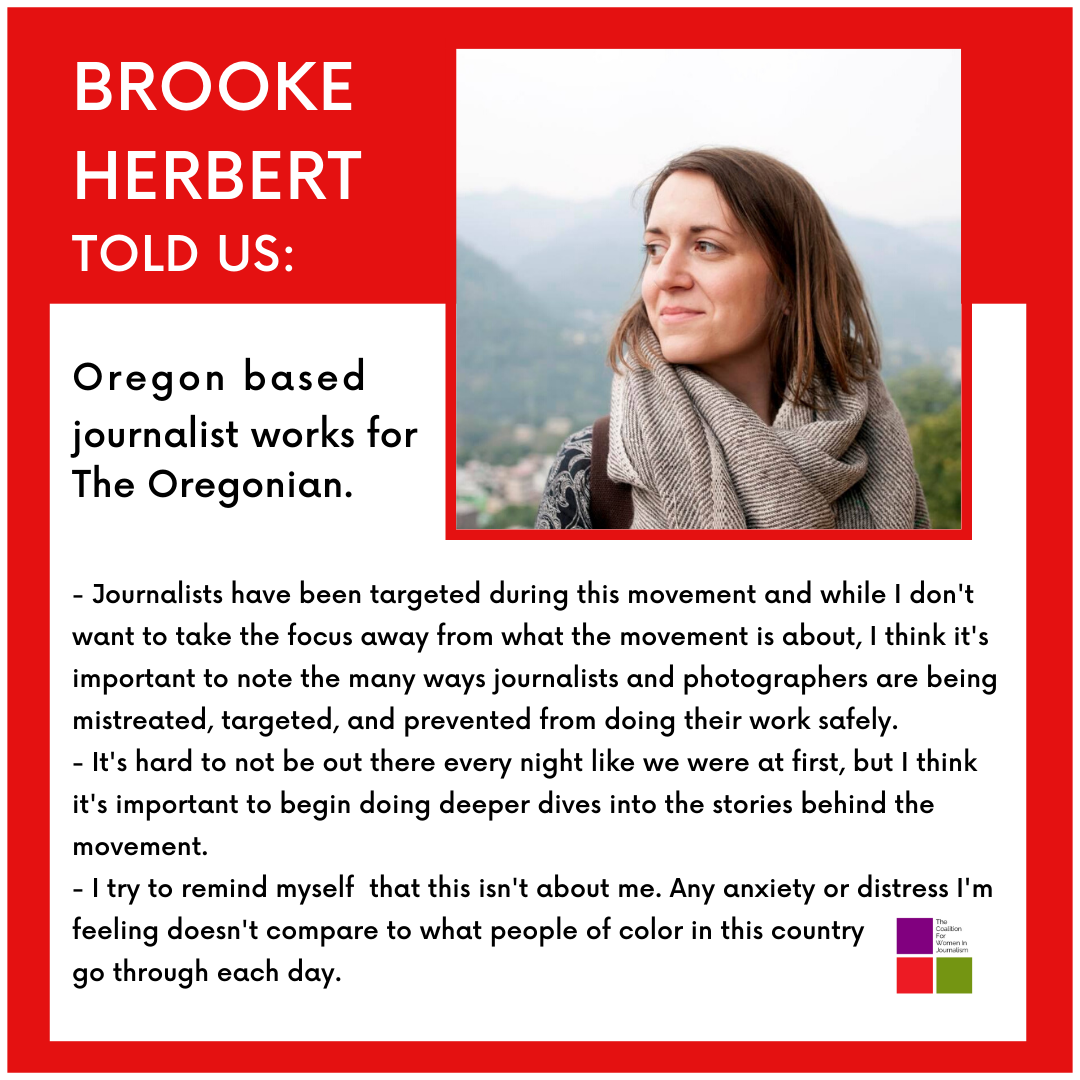US Protests 2020
Demonstrations sparked across the US after a black man, George Floyd, was murdered by a white police officer in Minneapolis, Minnesota. These protests began to demand justice for George and many other black people killed due to racial discrimination, to defund the police, and to ensure racial justice. With police forces deployed at protest sites across the country, journalists on the ground remain vulnerable to violence, arrest and censorship. Hundreds of journalists have been reported to have faced attempts at censorship, verbal and physical atttacks, blatant threats and police violence while reporting the demonstrations - not just in the US but globally. Many have been arrested while on duty, while black journalists - said to be more prone to these threats - have also been targeted. CFWIJ has been monitoring and documenting the threats and violence against women journalists from the get-go.
Index
CFWIJ Press Freedom Attack Tracker
Infogram
Journalists covering the #BLM protests have been subjected to violence by law enforcement in the US. CFWIJ closely follows these events as they continue to unfold.
More than 430 press freedom violations were documented in the USA.
Source: U.S. Press Freedom Tracker instead
Press Freedom
Find A Woman Journalist Reporting On #BLM Protests
Women journalists across the US report on the front lines of the ongoing #BLM protests. CFWIJ's dedicated map features both full-time and freelance journalists, who can be reached out for analysis or have work commissioned by editors and newsrooms. You can also follow them on social media and find their protest related work.
Number of Women Journalists: 130
Updated: August 7, 2023
If you are a woman journalist reporting on #BlackLivesMatter protests on the frontlines, get in touch to be added to the map.
Safety Guidelines
The true quality of a nation’s democracy can be measured through the security and safety of its journalists in all times and places.
The Coalition For Women In Journalism follows the historic #BLM demonstrations taking place around the world. We remain concerned for the safety and well-being of our colleagues covering the protests since the beginning. We encourage all our readers to consider these safety guidelines, specifically developed to cater to journalists working on the ground amid threats of violence and COVID-19.
Before Leaving The Site
Equipment and Gear:
Wear light clothing that will cover most of your body and allow mobility. Avoid using contact lenses, wearing sandals or long skirts. Avoid wearing jewellery.
Ensure you take the following with you:
A backpack with your badge and photocopies of your documents. Do not take your passport. Take a colored photocopy
Money - in case you get arrested and need bail
Prescription drugs
Food and water for drinking and washing away tear gas
Antacid tablets - mixed in water - for neutralizing the effects of pepper gas
Spare batteries for your camera and a charger
A small first aid kit
A medical information card listing your blood type and any illnesses you may have
Goggles and dust mask, or preferably a respirator/gas mask with a spare canister in case of tear gas. You might also want to consider packing a light armor vest and a headgear such as a helmet, which is legal to use in your area
Planning:
Have a contact list of lawyers that may help in case of arrests and/or attack by others.
Research about the location and nearby police stations and possible escape routes.
Identify the type of audience that will be on the ground (whether they are friendly towards press or not).
Have phone numbers of journalism advocacy groups and journalists’ unions.
On The Ground
Health and safety:
Safety first, reporting second! The biggest threat in the midst of a large crowd is getting crushed. A safe filming position will improve your safety and buy you precious thinking time. Think about using street furniture to protect you. If you find yourself in a confrontation, aim to disengage quickly and safely, stay together as a team and stay on your feet.
Use the buddy system and team up with another reporter ahead of time. The risk of being separated, lost, fatigued or injured during a protest is likely. Think ‘WHAT IF’ and discuss potential risks within your team and create contingency plans. Key points to consider are escape routes, safe havens, emergency meeting points, communications, what happens if someone gets injured and protective equipment.
“Harassment is harassment,” If you’re being harassed sexually, verbally or online, by sources, by authorities, report immediately to trusted sources.
Legal aspects:
Identify yourself as a journalist and be prepared to explain the law that you have a right to be on the ground and film public gatherings.
Law enforcement personnel might ask you to hand over your equipment or erase photos/recordings of the event. However, they do not have the authority to do so. While we would not recommend you to physically resist them, instead try to politely explain why you are not bound to follow their instructions. If possible, slide your SD card out and keep it somewhere safe with you or upload the content including photos, videos, recording and notes wirelessly as soon as you can. Keep yourself updated with the federal Privacy Protection Act’s legal protections. They restrict government officials, including the police, to search and seize your devices and equipment. If they ask you to handover the equipment, cite how the law protects you from obliging to such orders.
Immediately contact your lawyer if the police do not abide by the relevant laws protecting journalists’ rights. In the meanwhile, do not break the law and show your press credentials when asked by the police.
Resources
This Fund Is Designed To Provide Financial Assistance For Black Journalists Facing Financial Hardship Who Are Unable To Pay For The Mental Health Support They Need During This Time. Link >
This Guide Will Teach You How To Make A Security Plan For Your Digital Information And How To Determine What Solutions Are Best For You. Link >
Here Is A List Of Great Resources That We Believe Will Be Helpful During These Frightening And Frustrating Times. Link >
Here Is The List Of Programs For Black Journalists By Cabj Who Are Advocating For Black Journalists And Media Workers. Link >
IFJ Created A Great Source Named ‘IFJ Safety Guidelines For Covering Demonstrations And Civil Unrest’ Link >
OSCE Created A Safety Of Journalists Guidebook For Journalists Covering Protests In The United States. Link >
Here Are Tips To Stay Aware And Safe While Working On The Street By NPPA Link >
Here Are Some Things To Keep In Mind In Planning And Carrying Out Coverage Of Civil Unrest By RTDNA. Link >
Here You Can Find Help Hotlines And Volunteer Attorneys By ACLU. Link >
The Work Of Article 19 Includes Campaigns To Protect Journalists From Threats To Their Lives, Families And Livelihoods. Link >
Read This Story About The Discrimination Black People Face In The Auto Insurance Industry. Link >
The Acos Alliance Strives To Empower Both News Organizations And Freelance Journalists To Embed The Highest Safety Standards Into Their Work. Link >
Here Is The List Of 75 Things White People Can Do For Racial Justice. Link >
The Reporters Committee’s Legal Defense And Foia Hotline Is Available To Journalists And Media Lawyers. Link >
Here You Can Find How The Tech Community Can Provide Support. Link >
Pen America Offers Three Simple Tips To Minimize The Spread Of Misleading Information. Link >
Here You Can Find Tips On Who And What To Record, Getting And Sharing Useful Images, And Keeping People Safe While Doing It. Link >
Here You Can Find 5 Ways To Start Being A Better Ally For Your Black Coworkers. Link >
The International Handbook Of Black Community Mental Health Launches By The Ubele Initiative. Link >
If You Are A Journalist — Or Know Of One — Who Has Been Detained, Arrested, Served A Search Warrant, Contact With Them. Link >
How to Avoid (Unintentional) Online Racism. Link >
Women On The Frontline
Women journalists covering protests across the United States have been working tirelessly providing the world with tremendously important pieces of information in these historic times. The Coalition For Women In Journalism has been following these brave professionals closely. You can find some of them below.
Timeline
Frontline Advice
We spoke to several woman journalists about their methods of reporting safely. Read more to find out how women journalists are reporting on the ground, from different locations; learn more about what they are witnessing and how they are taking care of their health and what tips they can offer you.

































